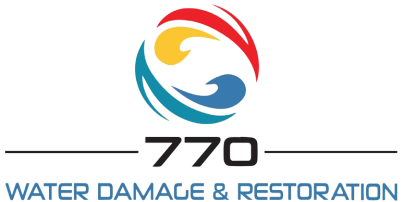Take Safety Precautions Against Water Damage
Water Damage Restoration Hermosa Beach — When water is flooding your home, all your impulses are likely screaming to remove the water as quickly as possible. While this is a good idea, you need to make sure the area is safe first. Begin by locating the main water supply to your home and shut it off. Before entering a flooded area in your home, turn off electricity to the area as well.
Now that you’ve addressed incoming water and the threat of electric shock, it’s time for one more potential safety concern. What type of water is flooding your home? There are three types of floodwater.
Clean Water: This water comes from rain, condensation, or leaky pipes. It has no outside contamination which makes it safe to remove and clean yourself.
Gray Water: Floodwater that can be described as slightly dirty comes from appliances like dishwashers, washing machines, and even clean toilets. Gray water is also safe to clean as long as you use proper safety gear.
Black Water: The worst type of floodwater is black water which can be contaminated with sewage, bacteria, or other dangerous substances. This water comes from sewage or serious flooding by nearby rivers or other bodies of water. However, it is not safe to remove and clean black water yourself. Thus, contact a professional service with a good reputation.
* Document Damage
When safety hazards are removed from the situation, it’s important to begin documenting the severity of the damage to your home. If you have a flood, renters’, or homeowner’s insurance, it’s a good idea to have as much information as possible when you file a claim. Take photos to document the damage before you begin to clean up and when you discover additional damage during the process.
* Look for Mold Caused by Water Damage
Mold can begin to grow on surfaces within 24 to 48 hours. Some types of mold are toxic to humans and all mold spores can trigger allergies and respiratory symptoms. If you’re facing water damage that has occurred over a long period (like a leaky roof or hidden pipe), mold growth is likely. Mold growth may look black, green, gray, or white, and can be dry, slimy, or fuzzy. If you find mold or mildew, take these steps for safe removal.
* Wear a mask, gloves, and safety goggles.
If mold only covers a small area, cut out molded material, bag it, and dispose of it quickly. If mold covers large areas, seal off the affected area to avoid spreading spores, and call a professional.
* Extract All Moisture
It’s important to remove all moisture as soon as possible to avoid continued damage to structural materials. No repairs should be completed before all moisture is extracted. Begin by removing all standing water. Use air fans to circulate dry air and speed drying time. For large areas or significant flooding, consider renting a large-capacity dehumidifier.
* Remove Damaged Porous Materials
Porous building materials can’t be repaired after exposure to moisture. These types of materials absorb water and warp, shrink, or swell. Even after drying, these materials are often subject to mold growth. Porous materials include:
– Carpet
– Insulation
– Fabric
– Wood
– Drywall
– Unsealed Cement
Portions of these materials that have absorbed moisture will need to be cut out and thrown away.
* Disinfect Remaining Surfaces
Disinfecting the entire area will help ensure any potential mold growth is eliminated. The most common disinfectant for this purpose is a bleach and water solution. Spray exposed surfaces thoroughly with disinfectant and wipe down the area before moving forward with repairs.
* Inspect and Repair Damaged Ceilings
Water-damaged ceilings can be hazardous. Sagging or buckled ceiling materials are in danger of falling. These heavy materials can cause significant damage and injury. Before attempting repairs, assess your skills, equipment for repairs, and physical condition. If you’re not up to this level of construction work, contact a professional. To repair ceiling damage, take these steps.
1. Remove ceiling panels.
2. Find the source of the leak.
3. Investigate beams and rafters for damage.
4. If structural damage exists, contact a professional for repairs.
5. Examine and Replace Damaged Wood From Water Damage
Wood expands when it absorbs water. It can also warp, rot, or harbor mold. Inspect all wood exposed to moisture for swelling, warping, breakage, or signs of mold. Pry apart damaged boards, and disinfect the area behind them thoroughly before replacement. Always replace structural components with wood of the same thickness and strength as the original pieces.
* Assess the Floors
It’s crucial to make sure floors haven’t sustained permanent damage. Signs of water damage to floors include:
-Warping
-Sagging
-Wavy floors
-Humps
-Soft spots
When facing water damage to floors, one needs to remove and/or replace underlayment and padding. Remove all damaged flooring. Examine the floor joists to ensure they’re structurally sound. Disinfect areas exposed to water or mildew before replacing flooring materials.
Replace Drywall Begin by examining your drywall for damage. Drywall that bulges, sags, or droops more than 3/8ths of an inch must be removed and replaced. However, small areas of damaged or molded drywall can be cut out and repaired.
* Inspect and Replace Siding
Inclement weather and roof damage can lead to flooding that damages the siding. Most often, people discover this type of damage after the winter. Outdoor water damage is usually caused by ice dams or winter storms and can cause additional damage when left unchecked. Remove damaged siding and inspect the materials beneath for water damage. Ensure the area is completely dry before replacing the siding.
* Caulk and Paint
After replacing all of the materials, take care of the finishing touches. Match products to your existing paint or stain colors and complete the necessary cosmetic repairs. When applying new materials, take the time to seal and caulk exposed edges to help minimize water damage in the future.
If you’re searching for home restoration that fits your budget and lifestyle, let 770 Water Damage & Restoration do the legwork for you. We work directly with your insurance agent.
How Water Damage Impacts Products In Your House Hermosa Beach
What To Do After Flooding on Minor Damages Hermosa Beach





